Introduction
So, let’s dive into the not-so-glamorous but incredibly crucial world of networking. If I’m being real, not everyone thinks of it as a walk in the park. I’ve met more than a few folks, from sharp-suited executives to eager MBA students, who’d rather face a root canal than another networking event. It can feel as awkward as prom photos and leave a residue of artificiality (Harvard Business Review). Still, these professional connections are like the secret sauce of career success and advancement.
Here’s a little trivia for ya: Did you know a staggering 70-80 percent of jobs don’t see the light of day on public forums because they get filled via networking and referrals? Yeah, blew my mind too! Turns out, knowing the right folks could unlock doors to employment opportunities that you can’t even find on job sites (UC Berkeley Extension). A strong personal network isn’t just your shield in tough times; it’s a goldmine of fresh perspectives, learning avenues, and life-long career boosts.
Alright, so let’s talk strategy! I mean, winging it ain’t gonna cut it when it comes to networking. That’s where a networking journal comes in. Think of it as your trusty notebook that keeps tabs on every handshake and follows up on every coffee chat. It’s like having a personal playbook for maneuvering through the web of professional connections efficiently.
What’ll I do here? I’ll walk you through setting up your own networking journal—mapping out your contacts, keeping an eye on relationship growth, and exploring ways to milking the benefits from your professional circle like a pro. For anyone curious about starting this ritual, check out more on how to start professional journaling. Together, let’s cut through the fluff and make networking our ally.
Setting Up Your Networking Journal
Shaping a networking journal is like holding a backstage pass in maintaining those all-important professional connections. This handy little tool helps you jot down, remember, and follow up on all the key details about your contacts and interactions. Here’s how you can stitch together a networking journal that’s both effective and easy to use:
- Pick Your StyleAre you a tech-savvy wizard or an old-school notebook fanatic? Maybe a bit of both? Each choice has its perks. Digital journals are great for quick searches and seamless links to other apps. But a good ol’ notebook gives you that personal touch. Choose what fits you like a glove.
- Layout Your JournalSorting your journal into sections is like having a tidy closet—you know exactly where to find what you need. Here’s a setup that’s pretty nifty:
- Contact Info
- Meeting Notes
- To-Do After Chats
- Events You’ve Attended
- Little Personal Thoughts
- What to Jot DownCapture all the must-know stuff for each person in your network. Think of it as your personal little encyclopedia of relationships. Here’s a simple guide of what to include:
Field Details Name Full Name Position/Title What They Do Company Where They Work Contact Information How You Can Reach Them Date of Meeting When You Crossed Paths Key Points Discussed What You Chatted About Follow-Up Actions Next Steps Personal Notes Their Likes, Hobbies, or Fun Facts - Jotting Down the GistAfter rubbing elbows at events or meetings, write down your thoughts and any promises made. Need tips on this? Check out our meeting notes journal for straightforward advice.
- Stay on Track with Your Follow-UpsKeeping relationships alive requires a little TLC. Record your follow-ups in the journal. This might be sending a thank-you note, linking up on LinkedIn, or planning another meet-up. For an organized approach, glance at our work journal template.
- Using the Cool Kiddie ToolsIf you’re vying for a digital journal, grab tools that sync up with other stuff you’re already using. Apps like Evernote or OneNote make the job easier, offering reminders and making your journal easily searchable. For more on this, pop over to digital integration methods.
- Keep it FreshUpdate your journal often with new contacts and fresh interactions. Regularly checking it out helps spot what’s working and where there’re chances to build more bridges. Staying active ensures your network doesn’t gather dust.
By thoughtfully recording what you say and do, your network can become a powerhouse of opportunities. To get even deeper into journaling tips, check out our articles on professional journaling methods and how to start professional journaling.
Contact Documentation Framework
Ya know, keeping a solid log of folks in my network ain’t just useful; it’s like a treasure chest of possibilities. So, here’s how I keep tabs on professional buddies, ensuring none slip through the cracks.
Basic Information
First off, I jot down the must-haves about each person:
- Name
- Current Position
- Company
- Email Address
- Phone Number
- LinkedIn Profile
Context and Background
To make sure I come across as thoughtful and not a robot, I jot down the “How we met” stories:
- How We Met: Where and how the sparks flew during our initial encounter.
- Date of First Meeting: Helps in remembering the good ol’ days since we first shook hands.
- Primary Topics Discussed: Key chat moments, so I’m not caught empty-handed next time.
Relationship Strength
Figuring out who’s who in the zoo so I don’t pester folks unneccesarily:
| Relationship Level | Description |
|---|---|
| Acquaintance | A quick hello and goodbye. |
| Colleague | We hang out now and then, more than just watercooler talk. |
| Close Contact | Smooth sailing with regular chats and some shared secrets. |
| Mentor/Mentee | Someone I look up to, or vice versa! |
Follow-Up Actions
Keepin’ connections alive with these buddy reminders:
- Last Interaction Date: Just to know when we last shared a “what’s up.”
- Next Steps: Hit them up with an email or maybe grab a coffee.
- Follow-Up Date: A heads up for when to reach out next.
Professional Insights
Keeping my network juicy by having these notes handy:
- Key Projects: Knowing what they’re knocking outta the park.
- Skills and Expertise: Their superpowers and top-tricks.
- Career Goals: Their big dream and where they wanna end up.
Networking Value Exchange
Connections go both ways, it’s gotta be a give and take:
- What I Can Offer: What cool stuff or help I can bring to the table.
- What They Can Offer: Opportunities or help they might have for me.
Contact Example
Here’s what it looks like when it all comes together:
| Field | Entry |
|---|---|
| Name | Jane Doe |
| Current Position | Product Manager |
| Company | XYZ Corp |
| Email Address | jane.doe@xyz.com |
| Phone Number | (555) 123-4567 |
| LinkedIn Profile | Jane Doe |
| How We Met | Bumped into each other at a networking party |
| Date of First Meeting | 01/20/2024 |
| Primary Topics Discussed | All about product dev and AI stuff |
| Relationship Level | Colleague |
| Last Interaction Date | 01/28/2024 |
| Next Steps | Need to ping her about that AI project |
| Follow-Up Date | 02/05/2024 |
| Key Projects | She’s cooking up some AI magic |
| Skills and Expertise | Knows AI and Project Management inside out |
| Career Goals | Wants to captain a tech team |
| What I Can Offer | Can hook her up with AI guru |
| What They Can Offer | Can spill some beans on AI product tips |
Wanna dive deeper into keeping your professional life tidy? Check out our professional journaling methods. You might dig some work journal templates, too. Remember—a neat network means you’re always prepped to snag chances when they show up. Turns out, 80% of jobs spring from having those solid connections University Lab Partners. Keeping my network log neat ensures I’m set to make the most of it all.
Relationship Development Tracking
Tracking professional relationships in my networking journal is my secret weapon for keeping tabs on the connections I’m building. I jot down every chat, set reminders for catching up, and keep an eye on how things are developing over time. Here’s my game plan for managing relationship development in my trusty journal.
Interaction Documentation
First up, I make sure to log every hangout with my contacts. I scribble down the date, how we connected (like, was it an email or a coffee chat?), and the juicy bits from our convo. This way, I’m always in the know about what’s shaking in my network.
Follow-Up Reminders
To keep things rolling, I set up little nudges to remind me when to reconnect. It’s like a built-in reminder to say “Hi” again, plan a meetup, or just check in. These follow-ups are gold for keeping those connections alive and kicking.
Progress Tracking
I’ve got a simple table where I keep a snapshot of where each relationship stands:
| Contact Name | Last Interaction Date | Interaction Type | Follow-Up Date | Progress Notes |
|---|---|---|---|---|
| John Doe | 03/12/2024 | Zoom Call | 04/12/2024 | Chatted about teaming up |
| Jane Smith | 02/25/2024 | 03/18/2024 | Shared some pro tips | |
| Michael Lee | 03/01/2024 | Meetup | 03/20/2024 | Checked out project ideas |
Engagement Activities
Besides just tracking chats, I dive into activities that pump up these relationships. Whether it’s checking out events together, firing off cool articles, or just saying “thanks” for their input, I make it clear they’re more than just a name on a list.
Open-Ended Questions and Active Listening
In conversations, I’m all about asking the right questions and really tuning in. This mix gets the talk flowing and tightens up connections, showing I’m genuinely in it for their thoughts and stories. (Props to UMBC Career Center for that tip!)
Showing Appreciation
A little “thanks” after every chat goes miles in building solid relationships. Whether it’s a quick note or an email shoutout for their help, it seals the deal on keeping those bonds strong.
So, there you have it. With these steps, I’ve got a handle on tracking and growing my professional network, keeping it lively and useful. If you’re curious about more ways to manage your work interactions, check out our reads on professional journaling methods and meeting notes journal.
Event and Meeting Notes
Keeping track of the stuff that goes down at events and meetings is my secret weapon. It helps me keep tabs on important info, jogs my memory about key chats, and lets me follow up like a pro. Here’s the lowdown on how I roll with my meeting notes journal.
Structuring Event and Meeting Notes
I chop up my notes into neat sections, making sure I don’t miss a beat in conversations, commitments, and all the juicy bits that matter.
1. Basic Information
- Name: Who, what, when
- Date & Time: When did it go down?
- Spot/Platform: Where it happened or the digital hangout
- Who’s Who: Who showed up and what they do
2. Agenda and Objectives
- Aims: What was on my hit list?
- Talking Points: What stirred the conversation?
3. Key Points and Takeaways
- The Highlights: What caught my ear
- Gems: Nuggets of wisdom and revelations
- Decisions: Moves we decided on
4. Action Steps
- Tasks: What needs doing
- Deadlines: When it needs to be wrapped up
5. Follow-Up Moves
- What’s Next: Post-meeting to-dos
- Contacts: Peeps I need to check in with
Recording Numerical Data
When numbers pop up, I jot ’em down fast and sure. Here’s my style:
| Metric | Value | Notes |
|---|---|---|
| Heads Count | 15 | Important folks in the mix |
| Time Spent | 1 hour | 3 PM to 4 PM slot |
| To-Dos | 5 | Look at the task section for details |
Why Detailed Notes Matter
Getting those notes down makes my life easier:
- Ready to Roll: Having all the deets means I come off polished in follow-ups. Standing tall, firm handshake, real eye contact—small things, big impact (UMBC Career Center).
- Bonding: Writing down shared tidbits lets me ask good questions and show I care, turning acquaintances into allies (UMBC Career Center).
- Staying in the Loop: Chewing over my notes keeps me plugged into my network, catching trends and cool tech (University Lab Partners).
Craving more on getting started with journaling your professional escapades? Take a peek at our guide on how to start professional journaling and dive into professional journaling methods for keeping it all in check.
Value Exchange System
Networking without a bit of back-and-forth is like a pancake without syrup—plain and not nearly as good. That’s why I whip out my trusty Value Exchange System to keep tabs on the interactions where I’ve either dished out or gobbled up some benefits in my network. This nifty tracking method makes sure I’m pulling my weight with the gang, paving the way for future scratch-my-back-I’ll-scratch-yours moments.
To make this system tick, I jot down every instance of give-and-take, noting whether I’m in the driver’s seat or riding shotgun. By doing so, I get a bird’s eye view of how things flow in each connect and steer clear of being one-sided.
Tracking Value Exchange
Using my value exchange setup, I log both the visible and the not-so-visible perks in play. Visible ones—stacking up info, introducing folks, or lending my wizardry where needed. The not-so-visible? Offering a shoulder, egging on pals, and tossing out thoughts that hit home.
Here’s the bread and butter of my networking diary for keeping track of these interactions:
| Date | Contact’s Name | Given/Received | Type of Value | Description |
|---|---|---|---|---|
| 10/03/2024 | Alex Doe | Given | Resource | Handed over a juicy report on industry whirligigs. |
| 10/10/2024 | Jamie Lee | Received | Feedback | Got some pointers on my big talk. |
| 10/15/2024 | Brianna King | Given | Introduction | Linked Brianna with a moneybag investor. |
| 10/18/2024 | Samuel Green | Received | Emotional Support | Some solid cheering during a rocky patch. |
With these slots filled, it’s easier to see how I’m knitting ties and lending a hand to my contacts.
Benefits of a Value Exchange System
- Mutual Growth: Helping each other is the name of the game for making ties stronger.
- Stronger Bonds: Reaching out to help gives my connections a solid footing.
- Better Sway: Offering more makes sure I’m the go-to person for anything nifty.
- Even Playing Field: Keeps me from being a resources hog and ensures I’m giving back.
Practical Tips
- Regular Review: I peek at my entries regularly to keep things fair and square.
- Keep It Real: Every chat is legit. I listen up and fire off open-ended questions (UMBC Career Center).
- Flashy Intro: I’m all about delivering a quick, killer pitch that highlights my strengths (UMBC Career Center).
- Tap Around: Staying active on LinkedIn ensures I’m always in the loop and tight with my circle (UMBC Career Center).
An active value exchange system isn’t just another tool in my networking kit—it’s the main squeeze. It lines up with other pieces like contact documentation framework and plays its role in relationship development tracking. This all-in-one setup helps me create strong, worthwhile, and two-way streets within my professional circles.
Network Analysis Tools
In my world of connecting with folks, it’s crucial to figure out who I’m rubbing elbows with if I want my career to shine. Using different tools gives me the inside scoop on my connections—helping me tweak them just right for that sweet spot of career satisfaction and progression.
Network Visualization
In my little universe, network visualization is a game-changer. I’m talking about creating a visual cheat-sheet of my connections where I can spot who’s who and who matters the most. These visuals help me figure out which relationships are strong as steel and which ones need a little TLC.
Example: Visualization Techniques
| Technique | Description | Benefit |
|---|---|---|
| Mind Mapping | Plots a web of topics and folks | Gives me the lay of the land |
| Graph Analysis | Shows dots (people) and lines (relationships) | Finds those VIP clusters and connections |
Metrics and Analytics
By keeping an eye on how often I chat and how those talks go, I can measure what’s up with my relationships. It tells me which bonds need a little nurture and which ones could open doors to new adventures.
Example: Key Metrics
| Metric | Purpose | Measurement |
|---|---|---|
| Frequency of Contact | Checks how often I reach out to each contact | Tally of chats per month |
| Interaction Quality | Rates our chatter style (business, chill) | Score card (1-5) |
| Influence Score | Judges the impact of a person in my circle | Math wizardry score |
Social Network Analysis (SNA)
SNA takes analyzing my contact list to another level. It’s all about spotting patterns in who I talk to, giving me the lowdown on how my network ticks. This tool explains things like how close-knit my crew is and who really holds the power in my group.
Example: SNA Metrics
| SNA Metric | Description |
|---|---|
| Density | Tells how many connections I got versus what’s possible. |
| Centrality | Points out who’s the big cheese among my pals. |
| Clustering Coefficient | Figures out how much my buddies hang together. |
SWOT Analysis
Doing a SWOT (strengths, weaknesses, opportunities, threats) analysis on my network keeps me savvy about what’s working and what’s not. It flags areas where I should dial up the connections or jazz up the existing ones.
| SWOT Component | Description |
|---|---|
| Strengths | Rock-solid relationships and reliable partners. |
| Weaknesses | Bonds that are too thin or infrequent. |
| Opportunities | New mingling chances that can spice up my network. |
| Threats | Stuff that might rattle the cage, like rising competition. |
Going through this SWOT part of my daily jotting keeps my professional network sharp and thriving.
Fancy learning more on this groove? Check these pieces about how to start professional journaling and different journaling techniques.
Strategic Relationship Planning
Keeping tabs on my professional connections with a networking journal is a real game-changer. It’s where I map out how to make my network work for me, tweaking things along the way for the biggest bang for my buck. Here’s my playbook.
First up, I play detective with my contacts. These are the folks who can give my career a nudge, shed light on the industry chaos, or offer a shoulder to lean on when the going gets tough. I slot them into categories based on their jobs, the industry they’re in, and how we’re connected.
| Contact Type | Description | Examples |
|---|---|---|
| Mentor | Gives me the kind of advice that helps my career grow some legs. | Past bosses, wise heads of the industry |
| Peer | On a similar journey as me—perfect for swapping stories. | Work buddies, classmates, fellow travelers in the field |
| Influencer | Big shots who can throw the spotlight my way. | Those keynote rock stars, authors, big names you see on LinkedIn |
| Resource | Holds the keys to valuable info or skills I need. | The research whizzes, the consultants who know their stuff |
I don’t just let these relationships float; I nail down what I want out of each one. It could be catching up once a month, brainstorming a project together, or getting the scoop on where the industry’s headed. Having clear goals helps keep my head in the game.
Then I review my circle of pals to spot what’s missing. I look at my key contacts and note any gaping holes. Like, if I’m short on the tech updates in my field, I scout for events or nerdy hangouts online where I can soak it all up (University Lab Partners).
Knowing that up to 80 percent of new jobs aren’t plastered all over the internet (UC Berkeley Extension), I put a premium on keeping these connections alive and kicking. I jot down new interactions, shared adventures, and what’s next on the docket for each contact in my networking journal. This way, I’ve got a handle on how things stand and what move to make next.
And let’s not forget the digital dance (UMBC Career Center). I’m on it with hashtags and handles, getting my face out there on LinkedIn, Twitter, and all those industry buzz spots. This online mingling is key to staying known and clued into the latest and greatest.
To keep things fair and square, I create a give-and-take system in my journal. It shines a spotlight on what I bring to the table, whether it’s cool articles, connecting folks, or dishing out my own two cents.
Noting down my ambitions for each relationship keeps me on track and aligned with my career roadmap.
| Relationship Goal | Frequency | Notes |
|---|---|---|
| Check-ins with Mentors | Monthly | Talk shop about career dreams, get wisdom nuggets |
| Collaboration with Peers | Quarterly | Team up for projects, swap secrets |
| Engaging with Influencers | Every two weeks | Chat on their posts, hyped about their stuff |
| Utilizing Resources | When needed | Ask for the 411, tap into their smarts |
Adding this strategic flavor to my networking journal makes it a cinch to cultivate and grow professional relationships—opening doors to bigger career leaps and personal strides. Whether I’m scribbling in a development journal or a progress journal, these tactics keep my networking game strong.
Digital Integration Methods
Adding digital tools to my networking game has kicked up my ability to keep tabs on and grow my professional connections. By tapping into different apps and gizmos, I can make contact management, event spotting, and relationship building way more straightforward.
Using Digital Platforms for Networking
Growing my online footprint through platforms like LinkedIn, Twitter, and personal blogs is my secret sauce for staying clued in on industry news, hiring gossip, and job tips. Here’s how I work these platforms into my networking toolkit:
- LinkedIn: I follow industry bigwigs, join chatty groups, and connect with colleagues. I scribble notes from webinars, jot down interactions, and list follow-up tasks in my journal.
- Twitter: I track hashtags that are all the rage in my field, jump into Twitter chats, and keep an eye on smart folks. I pen down key insights and potential contacts in my journal as well.
- Blogs: Running a professional blog lets me share my two cents and engage with like-minded people. I jot down blog ideas, audience feedback, and chances for teamwork.
Contact Management Apps
Sorting out my contacts is a must for solid networking. I use apps like Contactually and HubSpot CRM to organize and tag my contacts based on things like industry, job title, and how we get along.
| App Name | Features | Journal Link |
|---|---|---|
| Contactually | Tracks who you chat with and when, nudges for follow-ups | Log interactions and set reminders |
| HubSpot CRM | Manages contacts and tracks emails | Sync notes and log chats |
Linking these apps to my networking journal makes sure that everything’s logged, and I can easily follow up when the time comes.
Event Tracking Tools
Industry events, conferences, and webinars are goldmines for meeting folks. Apps like Eventbrite and Meetup help me find and track these get-togethers.
| Tool Name | Features | Journal Connection |
|---|---|---|
| Eventbrite | Finds events, handles tickets, and sends reminders | Log who you meet and what happens at events |
| Meetup | Connects you with local meet-ups and groups | Note group chitchats and upcoming events |
Recording what I learn and who I meet at these events in my journal means I can circle back with new contacts and deepen those ties.
Digital Note-Taking Apps
Using apps like Evernote and OneNote lets me document and sort out my networking adventures. They allow me to write detailed notes, attach crucial docs, and set reminders.
| App Name | Features | Journal Connection |
|---|---|---|
| Evernote | Handles notes, attachments, reminders | Sync and tag notes |
| OneNote | Helps organize by sections, supports multimedia | Log meetings and attach docs |
Scheduling and Task Management Tools
Good networking means keeping up with follow-ups and task juggling. Tools like Trello and Asana help me manage my networking hustle.
| Tool Name | Features | Journal Connection |
|---|---|---|
| Trello | Organizes tasks with boards, lists, and deadlines | Log tasks and deadlines |
| Asana | Helps manage projects and sets alerts | Manage follow-ups and track progress |
Bringing these digital tools into my networking routine guarantees that my professional connections are watched over, grown, and improved in a slick way. If you’re hungry for more tips on professional journaling methods, swing by professional journaling methods.
Conclusion
Keeping up with a networking journal might just be your secret weapon for building rock-solid professional relationships and boosting that career of yours. It’s like having a personal playbook that helps me remember who’s who, what was said, and how things are going down the line. With this trusty sidekick, we can make sure every chat or meet-up counts and aligns with our big plans ahead. Whether we’re mapping out those dream connections or mixing in some digital tricks, this journal can guide us just right, helping us form better alliances without a hitch.
Having my networking notebook, I’m all set to walk into meetings prepped, jot down those oh-so-important event memories, and get into a fair give-and-take with my contacts. Using some neat tactics, like savvy network analysis tools or kicking in a value exchange system, I’m on top of it when it comes to keeping my network sorted and my connections meaningful.
Many folks don’t realize how valuable those event and meeting notes are for keeping in touch and building connections. That’s where a meeting notes journal has my back, making sure all those important nuggets and to-dos aren’t lost in the hustle and bustle, helping me keep my networking ambitions cruising.
Plus, going digital amps up my journal’s power, making it super easy to update or find what I need, no matter where I am. Pairing old-school journaling habits with the new-tech gadgets helps me stay sharp, tidy, and always on my A-game when it comes to networking.
Embracing these methods and tools means I’m ready to weave strong professional bonds and crack open fresh opportunities for my career climb. Want more on journaling magic? Dive into our reads about professional journaling methods and career progress journals to get even more tips and tricks!
Ready to level up your writing and journaling skills? Check out my books “Write Your Way” and “The Art of Journaling” for more expert insights and techniques!







